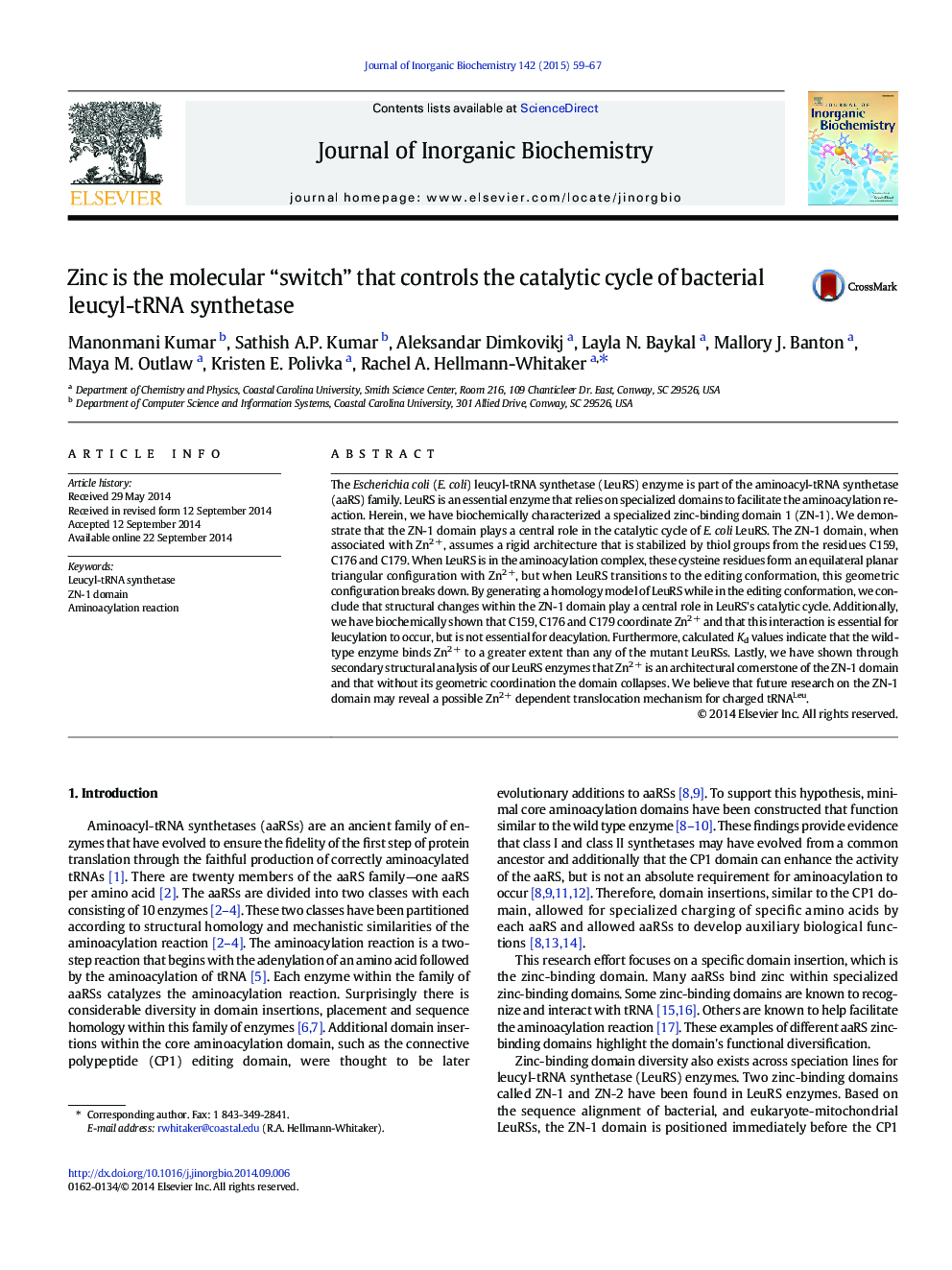| Article ID | Journal | Published Year | Pages | File Type |
|---|---|---|---|---|
| 1317220 | Journal of Inorganic Biochemistry | 2015 | 9 Pages |
The Escherichia coli (E. coli) leucyl-tRNA synthetase (LeuRS) enzyme is part of the aminoacyl-tRNA synthetase (aaRS) family. LeuRS is an essential enzyme that relies on specialized domains to facilitate the aminoacylation reaction. Herein, we have biochemically characterized a specialized zinc-binding domain 1 (ZN-1). We demonstrate that the ZN-1 domain plays a central role in the catalytic cycle of E. coli LeuRS. The ZN-1 domain, when associated with Zn2 +, assumes a rigid architecture that is stabilized by thiol groups from the residues C159, C176 and C179. When LeuRS is in the aminoacylation complex, these cysteine residues form an equilateral planar triangular configuration with Zn2 +, but when LeuRS transitions to the editing conformation, this geometric configuration breaks down. By generating a homology model of LeuRS while in the editing conformation, we conclude that structural changes within the ZN-1 domain play a central role in LeuRS's catalytic cycle. Additionally, we have biochemically shown that C159, C176 and C179 coordinate Zn2 + and that this interaction is essential for leucylation to occur, but is not essential for deacylation. Furthermore, calculated Kd values indicate that the wild-type enzyme binds Zn2 + to a greater extent than any of the mutant LeuRSs. Lastly, we have shown through secondary structural analysis of our LeuRS enzymes that Zn2 + is an architectural cornerstone of the ZN-1 domain and that without its geometric coordination the domain collapses. We believe that future research on the ZN-1 domain may reveal a possible Zn2 + dependent translocation mechanism for charged tRNALeu.
Graphical abstractFigure optionsDownload full-size imageDownload as PowerPoint slide
